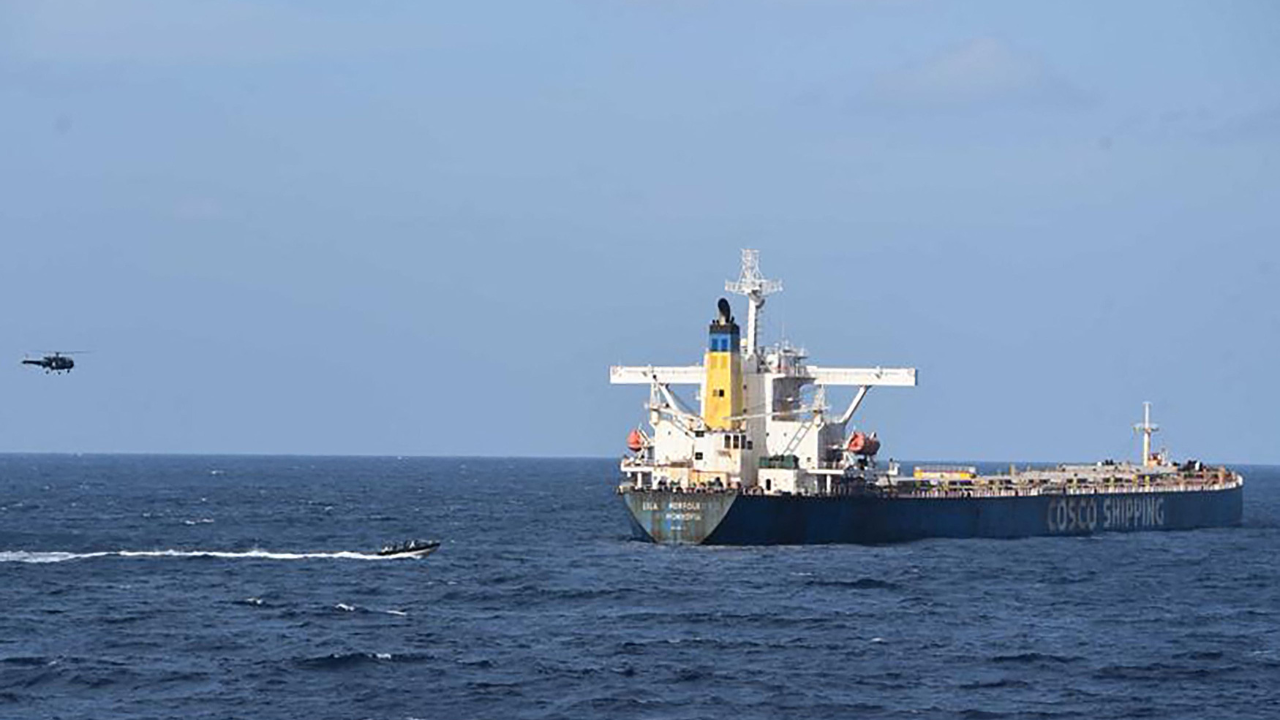
Over 10 warships sent to deter pirates of the Arabian Sea
NEW DELHI : India has deployed over 10 warships with marine commandos in the Arabian Sea and Gulf of Aden, showing its naval presence to deter piracy and drone strikes. The Indian Navy is conducting enhanced maritime security operations independently. They are maintaining a persistent presence with regular surveillance missions using P-8I aircraft and Sea Guardian drones. The deployed warships include INS Kolkata, INS Kochi, INS Chennai, INS Mormugao, INS Talwar, and INS Tarkash.
This unprecedented ‘enhanced maritime security operations’ are being conducted independently by India, which has refrained from joining the US-led multinational ‘Operation Prosperity Guardian’ launched in the Red Sea in December after attacks on civilian as well as military ships by Houthi rebels of Yemen.
With escalating piracy and drone attacks on commercial vessels threatening critical sea lanes of communications, which has already led to a major jump in freight rates, the Indian Navy is also maintaining a ‘persistent presence’ in the Arabian Sea, senior officers told on Monday.
“Indian warships are deployed all over the region to enhance surveillance and deterrence against the twin threats from pirates and drone strikes. The aim is to help stabilize the situation in the Arabian Sea and promote net maritime security,” an officer said.
Regular ISR (intelligence, surveillance and reconnaissance) missions are also being flown by P-8I long-range maritime patrol aircraft and unarmed MQ-9B Sea Guardian drones, both of which are capable of providing ‘live feeds’ of high-resolution imagery with their electro-optic and other advanced sensors, from the west coast.
The warships deployed include guided-missile destroyers like INS Kolkata, INS Kochi, INS Chennai and INS Mormugao as well as multi-role frigates like INS Talwar and INS Tarkash. The Navy and the Indian Coast Guard are also closely coordinating the enhanced surveillance of the country’s Exclusive Economic Zone.
It was the 7,500-tonne INS Chennai and its marine commandos, backed by P-8I aircraft, which had thwarted the attempted hijack of a Liberia-flagged merchant vessel MV Lila Norfolk and rescued the 21-member crew in north Arabian Sea on January 5. “Our warships have investigated a large number of vessels plying in the region…several have been boarded by marine commandos,” another officer said.
The Navy also dismissed as a ‘misconception’ that its warships are not geared against drone attacks. “They have a variety of guns, short and medium-range air defence missiles as well as some jammers that can be used if a situation warrants,” he added.
While the Indian Navy may not be part of ‘Operation Prosperity Guardian’ in the Red Sea, there is ‘continuous sharing of information and coordination’ with all navies of ‘friendly foreign countries’, including the US, UK and France, to bolster overall maritime security and domain awareness.
The Navy’s Information Management and Analysis Centre (IMAC), which takes feeds from multiple sources ranging from coastal radars to satellites to assess threats in the Indian Ocean Region, and the Information Fusion Centre – Indian Ocean Region (IFC-IOR) in Gurugram, which has international liaison officers from over a dozen nations, also plays a key role in this.
“The Navy’s ‘mission-based deployments’ in the region enable rapid responses to emerging security challenges,” the officer said. India, incidentally, has been regularly deploying warships on anti-piracy patrols in the Gulf of Aden since October 2008, with around 110 such vessels being deployed for it since then.
